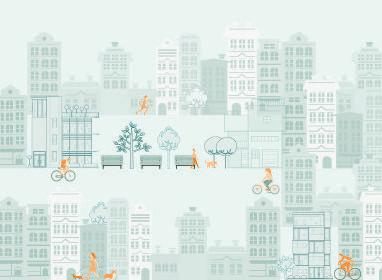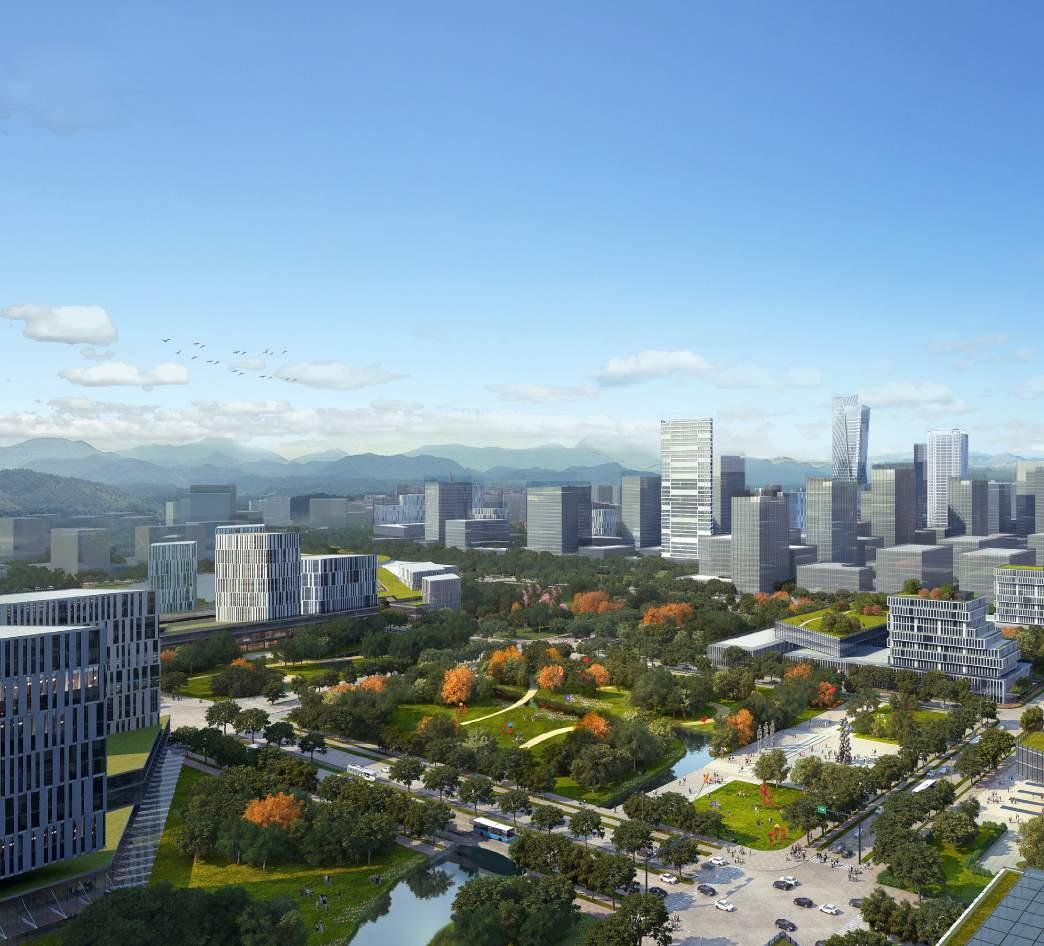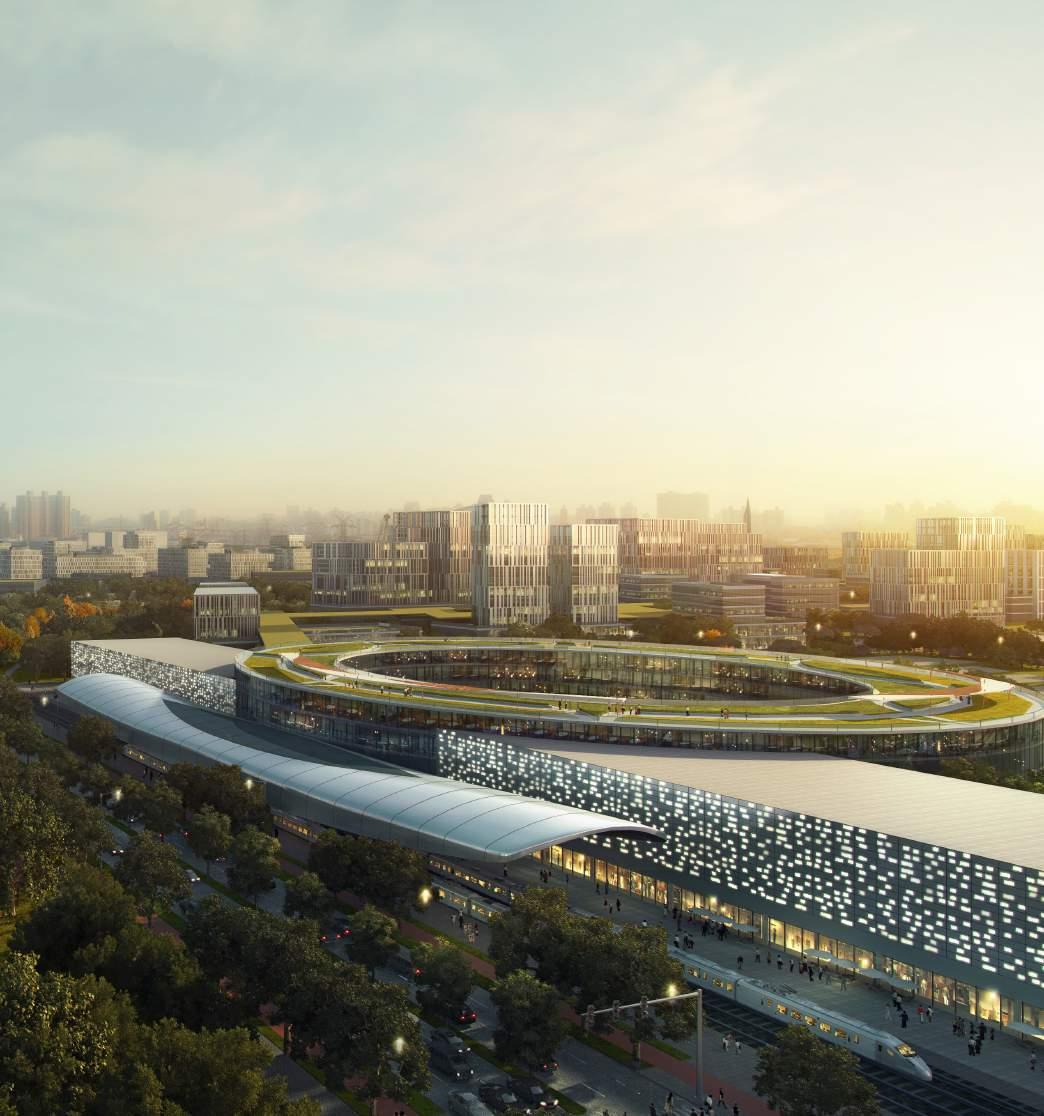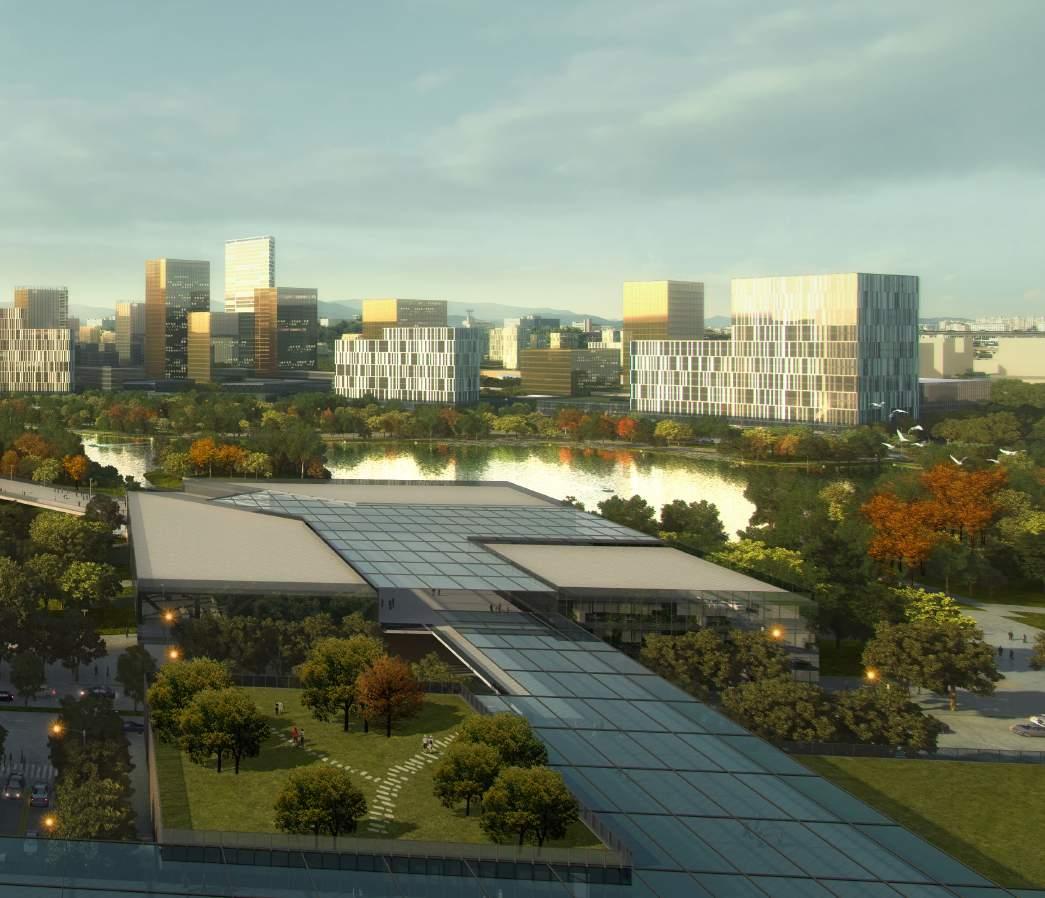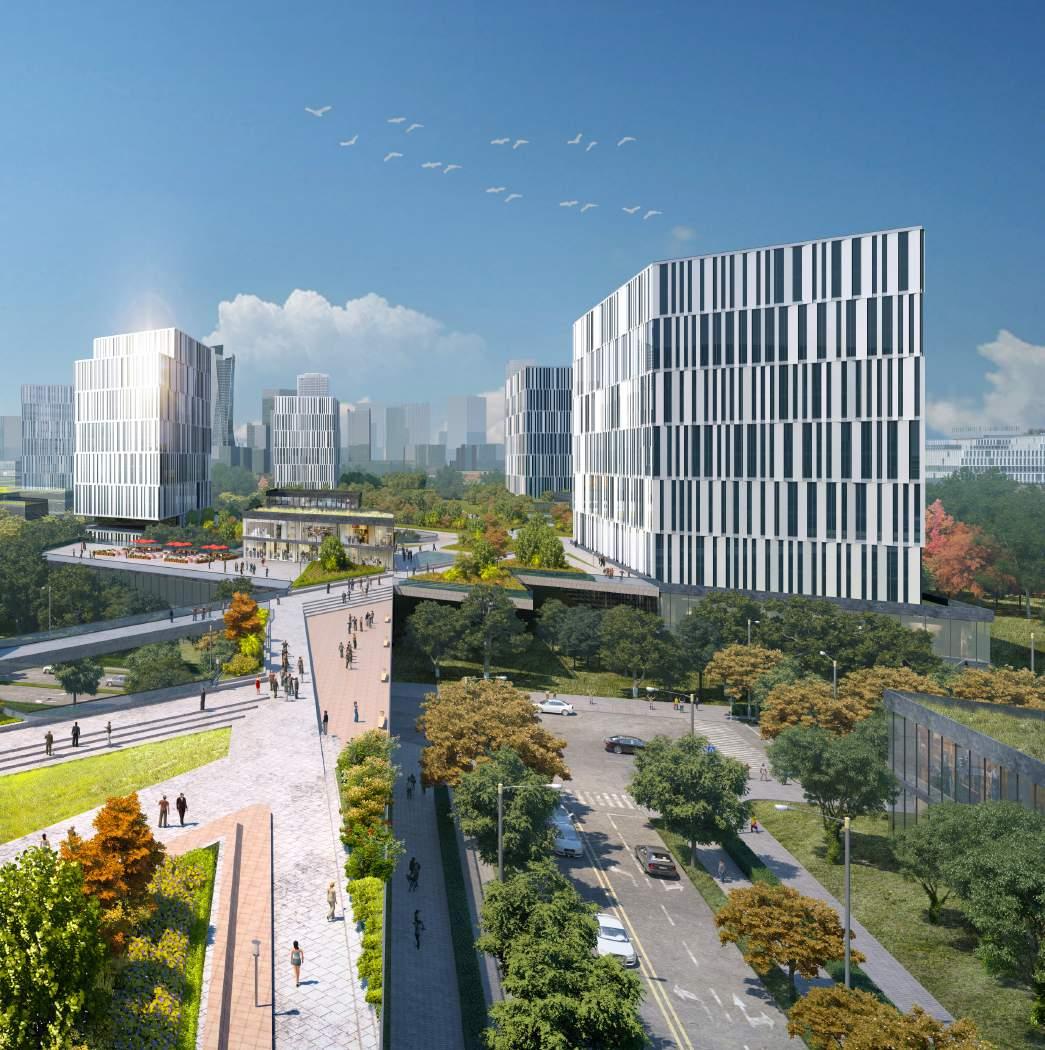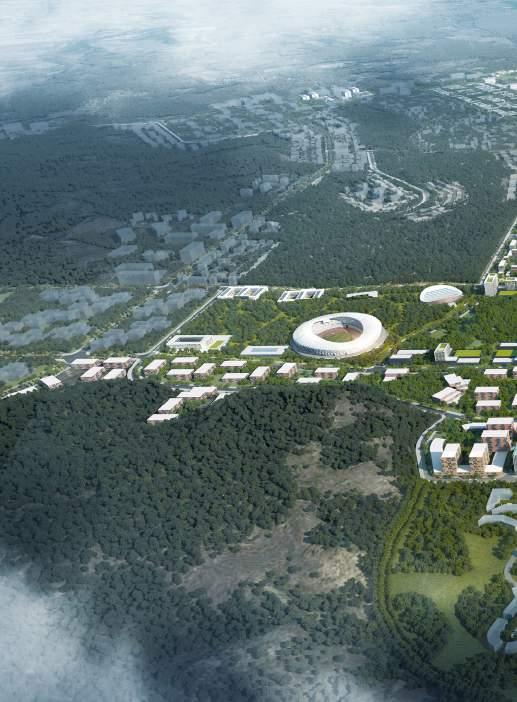
6 minute read
WORK-LIVE-PLAY
from Clark Magazine Vol 1
by BCDA
Venues where nature, cultures, and businesses harmoniously complement each other make for dynamic and progressive societies
As told to the editors by
Advertisement
Josephine Gotianun Yap
Going by the numbers, there’s no denying the Philippines is “the rising Tiger of Asia.”
Te Philippine economy is now pegged at $292 billion, and is forecasted to rise to $1.2 trillion by 2030. By the end of this decade, according to a report by the Asian Development Bank, the Philippines can achieve upper-middle income country status with per capita income of at least $4,126—a fgure similar to those of China, Malaysia, and Tailand.
Well-positioned in this foreseen growth is Filinvest Development Corporation, a diversifed conglomerate with interests in property, banking, hospitality, power generation, and the sugar industry. A leading real estate developer with over 50 years of experience and PhP527.5B ($10.3B) in assets, Filinvest boasts of nine major city and township developments spread over 3,000 hectares across the Philippines. Te group also has a retail and ofce portfolio of a million square meters. With our diverse portfolio and our expertise in townships—masterplanned, integrated, and mixed-use communities—partnering with Bases Development and Conversion Authority for turning the vision of New Clark City into reality seemed almost predestined.
Te live-work-play-learn model is perfect for New Clark City. Changing times call for convenience and fexibility. Mixed-use developments put the essence of full integration to heart: to create seamless circulation that empowers every urban dweller. Te ultimate beneft of this model is one I describe as a holistic lifestyle, one that’s inclusive and well-rounded, actively supports you and your community’s needs, yet inspires everyone to be at peak.
Tis sounds easier said than executed, however. Te challenge of urban planning today is to blend three important aspects:
Te frst is to bring back the human scale and intimate community place-making into our cities.
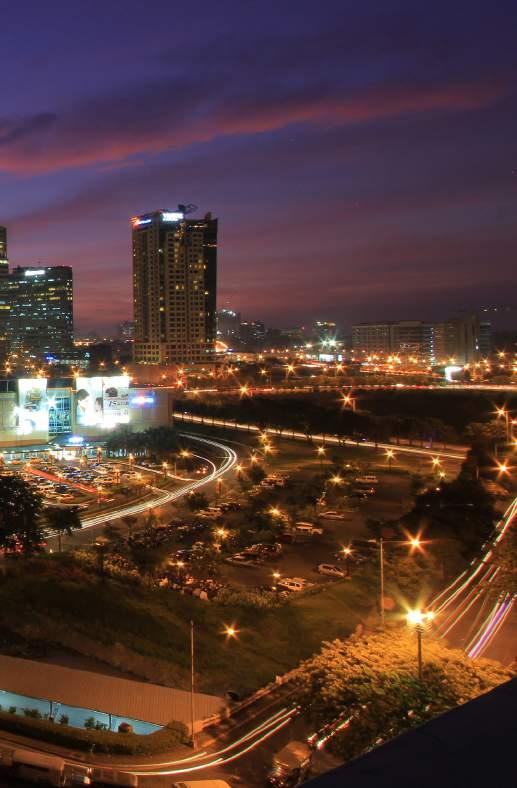
Te second is to incorporate the evolving requirements of cities in pursuing their economic goals in the most efcient and cost-efective manner. And third is to ensure the sustainability of its environment through the use of technology.
As Filinvest designs its master planned cities, we have these three goals in mind. We consider not only
Envisioned to be competitive with the world’s most modern cities, Filinvest City is a fully integrated and self-contained community, divided into districts to provide a balanced mix of developments.
simple things like dedicated bike lanes, but also district cooling systems and the use of recycled water to water plants. All stakeholders of the city—locators, workforce, visitors or surrounding communities—regardless of socio-economic standing, benefit from this.
Circulation and mobility are important to us. In our 244-hectare Filinvest City in Muntinlupa, we have a grade separated pedestrian riverwalk amidst a linear parkway traversing the entire city. In our 677-hectare Timberland Heights, a mountain suburban townscape near Quezon City, we have mountain bike trails incorporated into wide open spaces. Te 288-hectare Phase 1 of New Clark City, meanwhile, incorporates the Manila-Clark rail.
I admire how forward-looking cities embrace diversity in all its forms—creating people-centric venues where nature, cultures, businesses and industries mingle, fourish and harmoniously complement each other, creating a dynamic and progressive society uniquely its own. Tis is the core of the new live-work-play-learn model.
Te onus of ensuring the sustainability of this model falls not just on the developer, but the whole community. A community’s dynamics is everybody’s business. For sustainability to work, each one plays a crucial role in its care. Malasakit (solicitude/protective concern), and sense of ownership are values that we can all share to carry the live-work-play-learn vision through to fruition, and later, to contribute in nationbuilding. How can this happen? By educating and exposing other communities to the possibilities of communities that are masterfully planned, integrated, and inclusive. When we show that this model is worth emulating, then other communities will follow. People will always choose to replicate what is successful.
Josephine Gotianun-Yap is president and CEO of Filinvest Development Corporation.
What matters
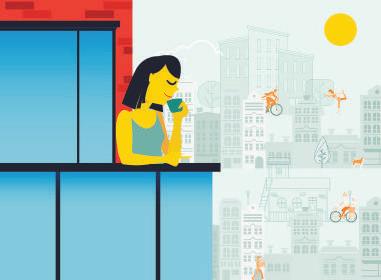
A dream home or neighborhood is made up of people who care most W e all have our own ideas of what our dream dwellings are—a high rise condo, a cushy bungalow in a gated community, a sprawling ranch on the outskirts of the city. Regardless of where we dream we could live, or actually are able to live, we’re likely to have basic requirements: that the place be safe, clean, and relatively for each other’s well-being accessible for work (or school) and emergencies. Less factors to worry about means less stress, and less worryBy ing translates to better quality time for whom we want to Regina Abuyuan while away our hours with, or for pleasures we want to pursue. Stress, afer all, has been coined “the silent killer.” Good physical and mental health greatly depend on how safe our homes are from hazards, and how much privacy, security, and safety we are provided with, be it by those who lead the neighborhood, or our collective eforts. Where we live and whom among we live indeed afects every aspect of our daily lives. Like a child who thrives better in a school that
makes learning enjoyable, so will we in an environment that makes us feel good about ourselves; that will make us feel most productive and happy. Efcient transportation, efective law enforcement, and good schools also add to this preferable milieu.
Tis is the principle behind live-work-play communities: that people are happier living in places that contain most of our needs, and by providing those needs, bonus living conditions are created as well. Tis convenience does away with the trouble and time taken up by long commutes; consequently, live-work-play communities also encourage more walking, physical activity, and interaction with neighbors, leading to healthier and more social lifestyles. Although this has become the winning pitch of many a real estate developer, the “live-work-play” community concept isn’t new. It’s existed since prehistoric times, when groups of families used to live in caves, and later, in tightly-knit villages, where work for the men wasn’t far away, and women could watch the kids as they played and grew alongside each other. In modern times, this is translated into neighborhoods where residents have good, if not civilized, ties with each other. Communities whose members have a high level of trust with one another also enjoy increased levels of health. Winston Churchill once said that “we shape our buildings, and aferwards, our buildings shape us.” If we all want homes—nay, neighborhoods—that give us peace of mind and fulfllment, then perhaps we should start with ourselves. How our communities are shaped and cities are formed depends much on our individual behaviors. We may not always have our dream houses—that chalet in the mountains or that high rise penthouse—but we can all have the closest thing yet: peaceful and nurturing homes and communities, where the citizens are invested in each other’s health, happiness, and contentment, by keeping the reasons for those conditions alive and present for ourselves, as well.
